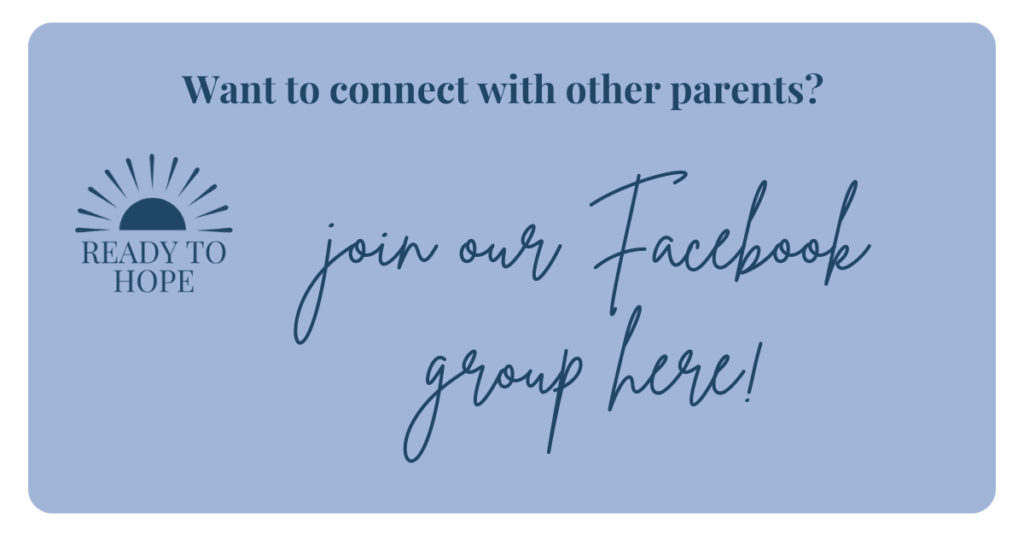Suicide Awareness and Prevention Month: Action Steps
Important to note: While Ready to Hope is run by a trained mental health counselor and our mission is to normalize the conversation surrounding mental wellness, these posts are not intended to be a substitute for seeking professional help. If you or a loved one is in immediate or imminent danger of self harm, please go to the ER, connect with a therapist or medical doctor, or call or text 988, the Suicide and Crisis Lifeline.
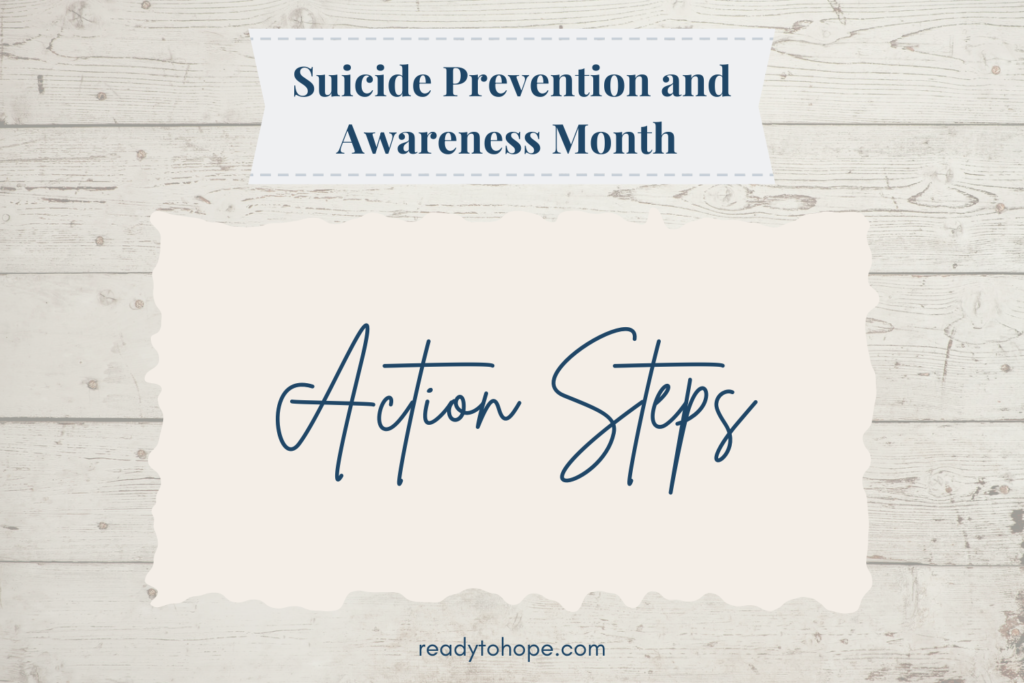
In honor of Suicide Awareness Month, we are continuing the conversation, and this week addressing action steps!
Our goal at Ready to Hope is always to be a beacon of hope, to convey the truth that there is always a way through, so we want to share with you today that it is possible to support someone who is struggling with suicidal thoughts.
Before we dive into the tips and action steps please know this:
We also want to say this: while we want you to have these tips and tools at your fingertips, because they can save lives, unless you are a professional, it is not your job to take responsibility for another’s actions. These tips are meant to give you tools if you need them. We hope you never do, but if you do, being prepared can make all the difference.
First, a reminder to check back to last week’s post to see the warning signs for suicide.
Now, let’s dive into the action steps!
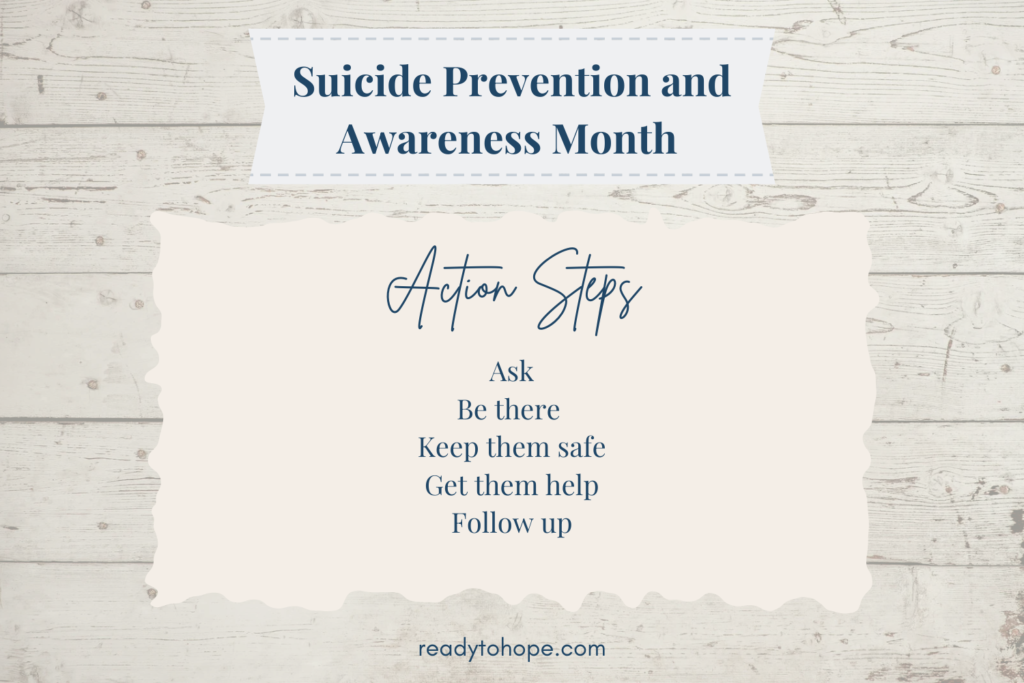
Action Step One: Ask “Are you thinking about suicide?”
Ask the hard question. You don’t have to be afraid to ask the hard question. Studies have repeatedly shown that asking the question does not increase the likelihood that someone will commit suicide (Gould et al, 2005). In fact, the data shows that often simply being given the chance to share your feelings and thoughts can be an outlet that decreases suicidal thoughts.
So: don’t overcomplicate this question. Don’t worry about dancing around it or softening the delivery. Simply ask: “Are you thinking about hurting yourself?” or “Are you thinking about suicide?”
Action Step Two: Be there.
Loneliness challenges the mental health of all of us, all the time. If you’ve ever felt lonely you know. And if you’ve ever felt lonely while dealing with difficult thoughts and feelings, you know even more.
So, simply staying with someone can be a gift and is an action step to prevent suicide.
Be there for the person. If your friend or loved one has opened up and shared that they are thinking about suicide, you are helping them by remaining with them.
It is not your job to ask the questions a therapist might ask, so take the pressure off your shoulders to do anything more than stay with them, and go on to action step three.
Action Step Three: Keep them safe.
Now that you have established that your friend or loved one is having suicidal thoughts, and you have told them that you will stay with them, it is important to help keep them safe. If they are to the point where they have a plan, it may be important to remove any lethal means from the situation, or move them from the lethal means. In whatever way you are able, reduce the risk of imminent danger for your friend or loved one.
Action Step Four: Get them help.
Once someone has shared with you that they are thinking about hurting themselves, and you’ve shown you care by remaining there with them and listening to them with compassion and taken care of keeping them physically safe in the moment, your next step is to get them the support that they need.
That support may take different forms, but your goal here is to help them connect with someone that can get them connected with therapy or even taken to a hospital.
Your goal is simply to feel confident that the individual is invested in and will follow through with providing them with the care that they need.
It can be a parent, a spiritual advisor, a medical professional, a coach, a therapist, or if you feel that they are in immediate danger, you can offer to take them to the emergency room.
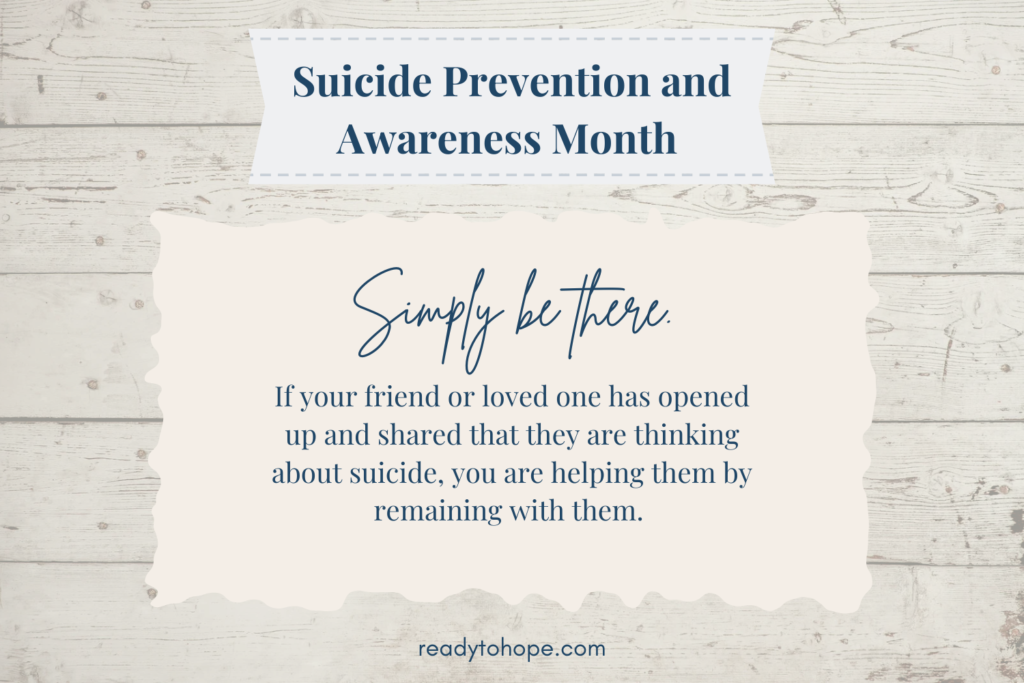
Action Step: Follow Up
After you have connected your friend or loved one with the support that they need to learn to cope with their suicidal thoughts, do what you can to continue to be there for them. Just as we said in step one- any way that you can combat loneliness is a loving act of kindness.
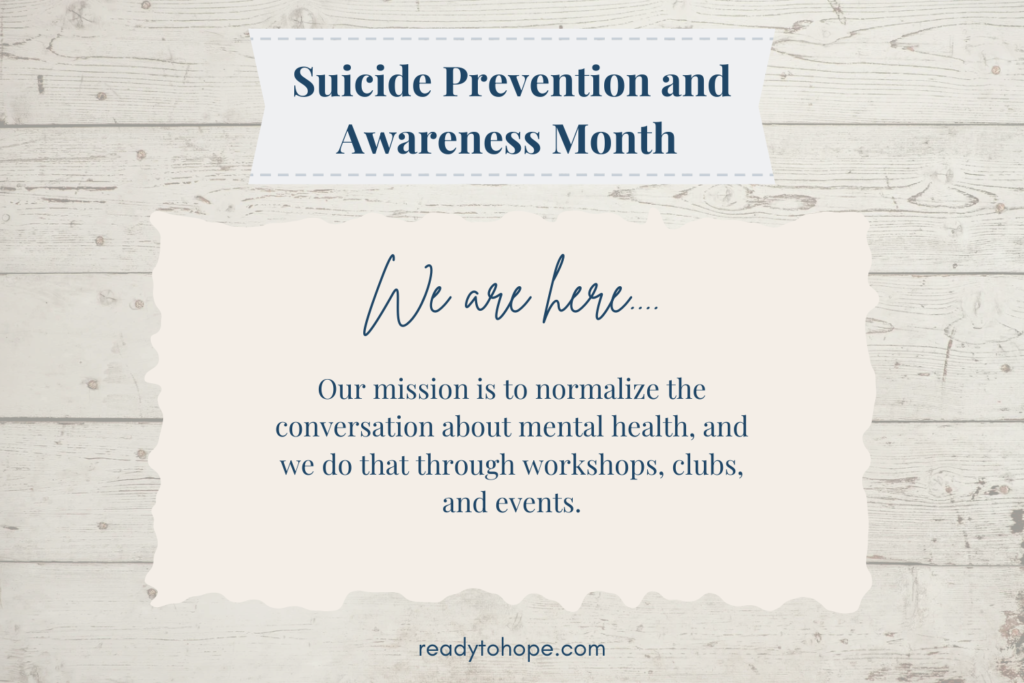
And as always, know that Ready to Hope is here. Our mission is to normalize the conversation about mental health, and we do that through workshops, clubs, and events.
Here are all the ways that Ready to Hope focuses on conversations surrounding mental wellness:
Find out about our Ready to Hope Club at Carmel High School here!
Find out about our workshops here!
And coming soon: Ready to Hope College clubs and workshops!
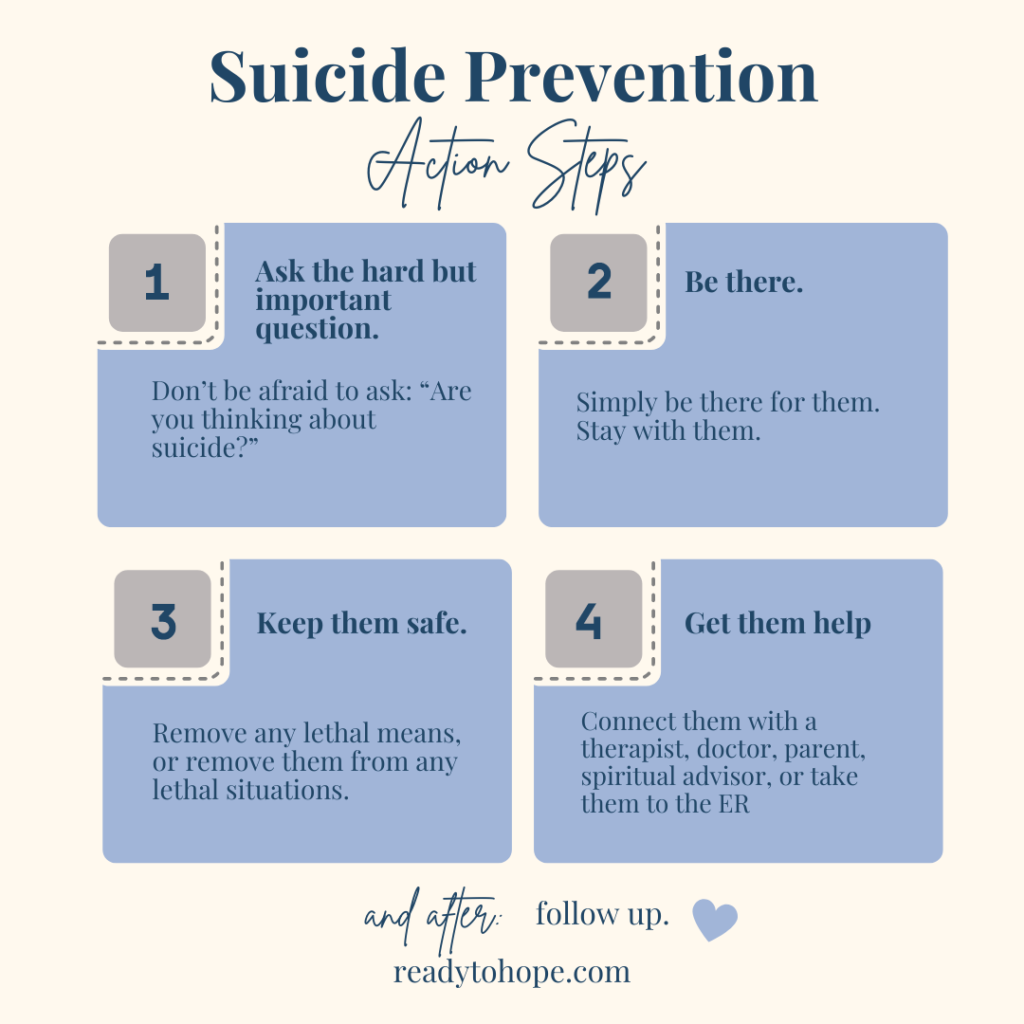
Sign up at the links, or join our email list, below!


